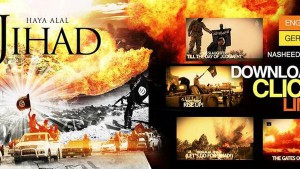The thing that separates DAESH from every other terrorist organization is the way it uses the media. For previous terror organizations, the media was an external factor that transferred the violence that it itself produced. DAESH, however, is an organization that has its own media and attaches greater importance to the power of the media and has a brilliant command of the Western media language. I recommend you read a series of articles published in The Washington Post last week to understand the extent of this media savvy.
According to a news package titled “Confronting the ‘Caliphate,'” which Greg Miller and Suad Mekhennet wrote after conducting interviews with DAESH militants, entering jails and carrying out research in the field in various countries, the most striking thing to come out of it is that DAESH’s most important “department” is its media arm. More precisely, DAESH’s ability to use the media is essentially what makes it different from all other terrorist organizations and has enabled it to reach its current power.
A cameraman, who served DAESH and is in jail in Morocco, explained how the system operates: First comes a piece of paper that bears the emblem of the “Islamic State” and sets the location of that day’s shot. The paper does not include any other details and what will be shot is understood only when the cameraman arrives at the scene. Sometimes the assignment is to shoot fighters exchanging fire or a great massacre.
According to the news piece, the organization has a broad media department that is administrated by foreigners, including at least one American. All of them worked in the media industry. Former DAESH militants who worked in this department say the media is the most prestigious department in the organization. Those working here have a higher status than the fighters and take part in the decision-making mechanisms. They have salaries and opportunities that the fighters can only envy.
DAESH militant Abu Hajer told journalists that the organization has special media training programs and that he himself received this training. Following the training program, which is about filming, shooting and production, he was given a Canon camera and a Samsung Galaxy smartphone and sent to Raqqa.
One point that requires attention is how the lives of those joining the organization completely change. For instance, Abu Hajer was previously living in squalor with his family in a house that lacked water in the outskirts of Rabat. However, when he joined DAESH’s media branch, they all moved to Raqqa where he was paid a salary of $700 a month and given a car and a villa with a garden. Also, the “Islamic State” exempted him from the taxes that it imposes.
The things he said reveal that DAESH’s managing staff and media team live in luxury in a region that is almost described as a “promised land.” They hold their cameras while entering a certain region and go back to their homes after finishing a normal workday. The terrorists speaking to The Washington Post are watching the atrocity that they live in like a Hollywood movie. Despite being a part of it, they seem as if they do not belong to it.
On the other hand, suicide fighters are a never-ending source and the organization’s greatest capital. Unlike the media staff mentioned above, they live in the heart of atrocity. The world is facing a brilliant and professional organization whose inner and outer cores are very different from each other. One need not to look down on them but rather look closer at an organization in order to understand its structure, which is almost like a caste system. The reactions arising from the West reveal that the West is far from doing so.
dailysabah.com



